Snakes are everywhere—and some might be closer than you think.
Whether you’re hiking a dusty trail, gardening in your backyard, or just flipping a log for fun (why?), there’s always a chance you’ll meet one of these slithering locals.
But don’t panic. Most are harmless, many are helpful, and a few? Well, they deserve a bit more personal space.
From the bold copperhead to the laid-back garter snake, the U.S. is crawling with fascinating species—each with its own personality, patterns, and quirks.
Some love the swamp. Others rule the desert. A few might even live right under your porch.
Ready to meet the stars of America’s serpent scene? These are the 16 snakes stealing the spotlight—whether you’re a reptile fan or just trying to stay informed (and unbitten).
Eastern Diamondback Rattlesnake
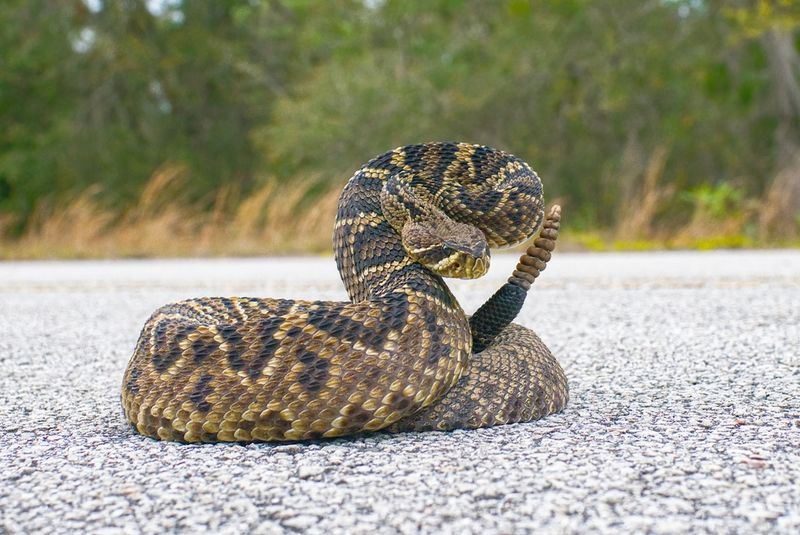
The Eastern Diamondback Rattlesnake is a formidable presence in the southeastern USA. Known for its impressive size and striking diamond pattern, this snake commands respect.
Despite its menacing appearance, the Eastern Diamondback serves an important ecological role by controlling rodent populations. Its habitat ranges from dry pine forests to coastal dunes, where it can often be found basking in the sun.
Caution is advised when encountering this snake, as its bite can be dangerous. However, with the right respect and distance, observing this majestic creature can be a rewarding experience.
Garter Snake

The Garter Snake is a familiar sight in gardens and fields across the USA. Known for its vibrant stripes, this snake is a harmless and beneficial presence in many backyards.
Garter Snakes are often seen slithering through grass or basking near water sources, where they hunt for small prey like frogs and insects. Their adaptable nature allows them to thrive in various environments, making them one of the most widespread snake species.
With a gentle demeanor, these snakes are often appreciated by gardeners for their pest control abilities, adding to their charm.
Corn Snake
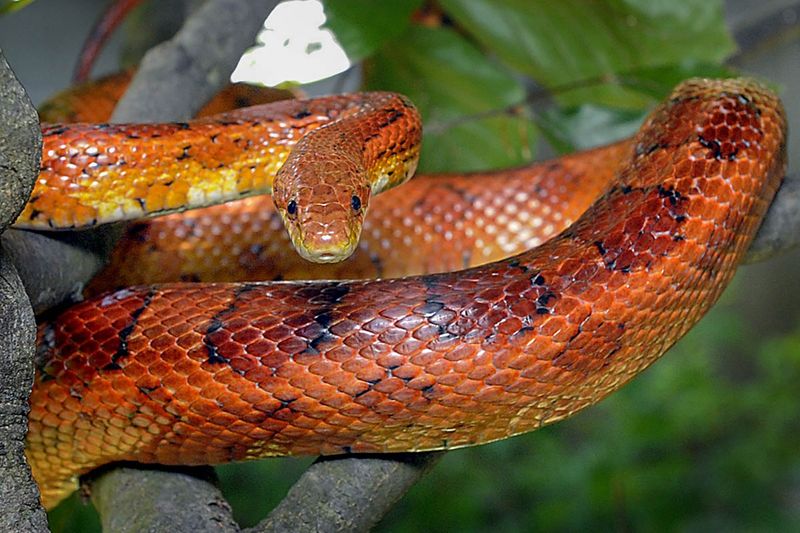
Corn Snakes are beloved for their striking colors and gentle nature, making them popular pets. Wild Corn Snakes are often found in the southeastern USA, where they inhabit forests and overgrown fields.
These snakes are excellent climbers and often seek shelter in trees or abandoned buildings. Their diet consists mainly of rodents, which helps in controlling pest populations.
Corn Snakes are non-venomous and easy to handle, making them a favorite among reptile enthusiasts. Their beautiful patterns and colors make each encounter a visual delight.
Copperhead Snake
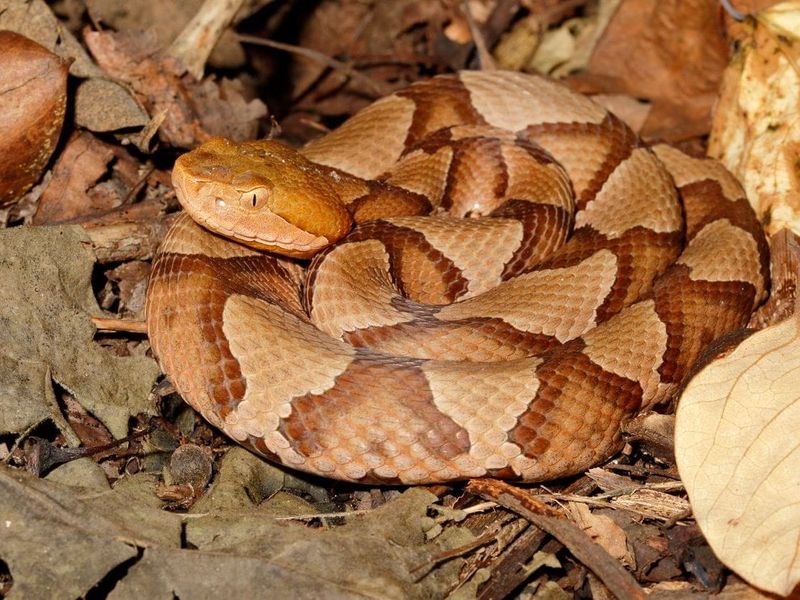
The Copperhead Snake is known for its distinctive copper-colored head and hourglass pattern. Found in the eastern and central USA, this snake prefers woodland habitats and rocky areas.
Despite its venomous nature, Copperhead bites are rarely fatal to humans. They are typically shy and avoid confrontation, relying on their camouflage to stay hidden from predators and humans alike.
Copperheads play a crucial role in controlling pest populations. Observing them requires caution and respect, as their ability to blend into their surroundings is truly remarkable.
Western Diamondback Rattlesnake
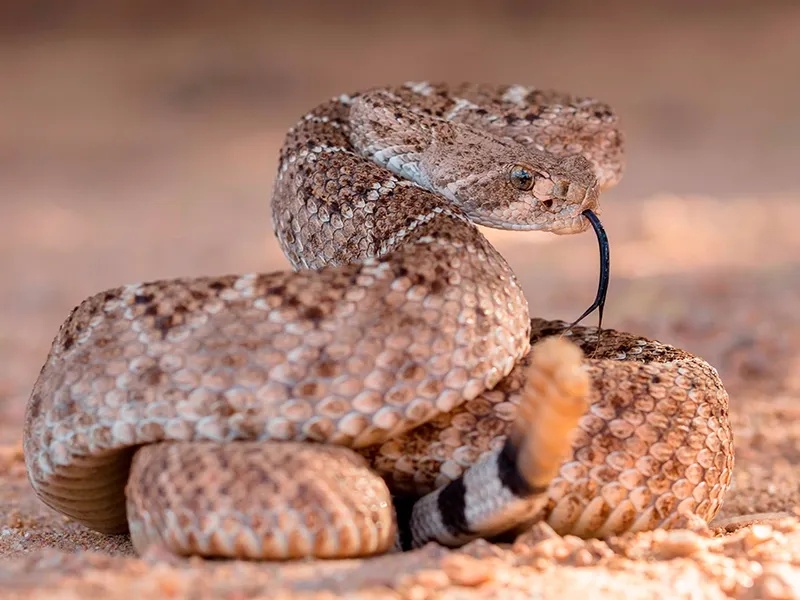
The Western Diamondback Rattlesnake is an iconic inhabitant of the southwestern USA. Recognized by its distinctive diamond pattern and rattling tail, this snake is both feared and admired.
Its habitat includes arid deserts, rocky hills, and grasslands, where it plays a vital role in controlling rodent populations. The Western Diamondback’s venomous bite serves as a defense mechanism, so caution is advised when encountering one.
Despite their reputation, these snakes prefer to avoid humans and will only strike if threatened. Observing them in their natural habitat can be an exciting experience.
Black Rat Snake
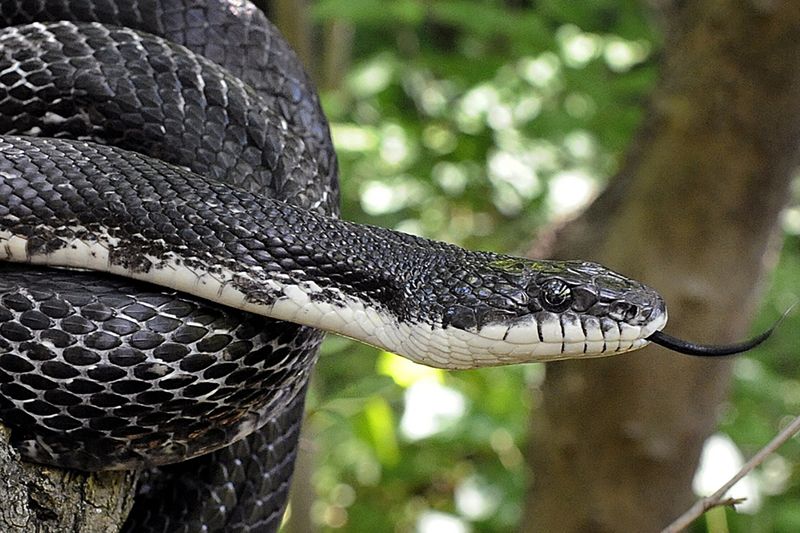
The Black Rat Snake, with its sleek black appearance, is a common sight in the eastern USA. Known for its prowess in climbing, this snake often seeks refuge in trees or abandoned buildings.
As a non-venomous species, the Black Rat Snake is harmless to humans and plays a beneficial role in controlling rodent populations. Its presence in barns and rural areas is often welcomed by farmers.
These snakes are known for their calm demeanor and adaptability, making them a favorite among nature enthusiasts who appreciate their contribution to the ecosystem.
Eastern Coral Snake
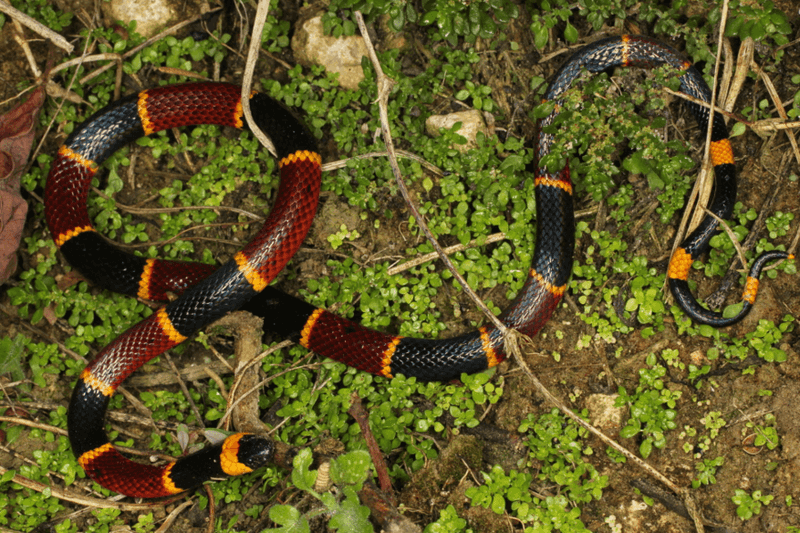
“Red touch yellow, kill a fellow; red touch black, venom lack”—this rhyme helps distinguish the Eastern Coral Snake from non-venomous look-alikes. Found in the southeastern USA, its vibrant bands are a warning sign.
Eastern Coral Snakes favor sandy habitats, forests, and marshy areas. Despite their potent venom, these snakes are reclusive and rarely encountered by humans.
Their diet mainly consists of other snakes, showcasing their predatory nature. Observing an Eastern Coral Snake requires both luck and caution, as their elusive behavior keeps them hidden.
Milk Snake
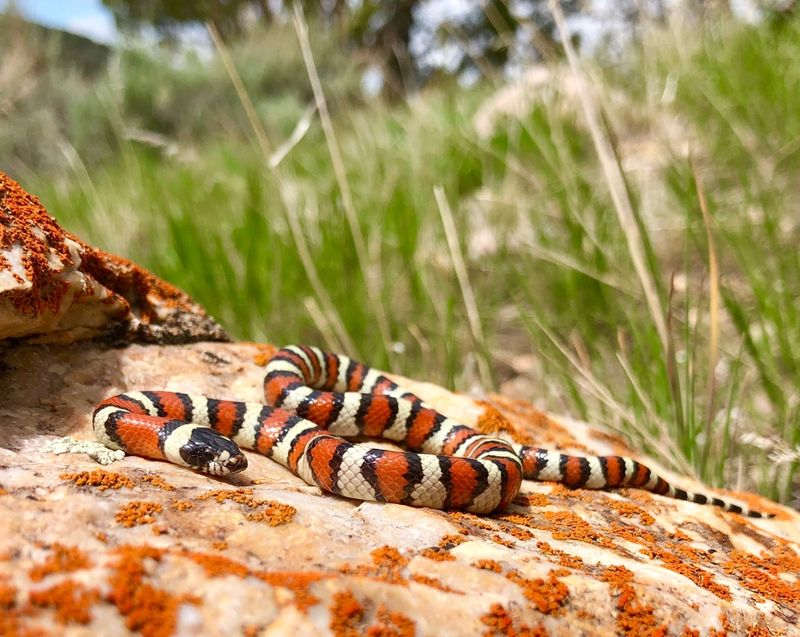
Milk Snakes are often mistaken for the venomous coral snake, but they are harmless and non-venomous. Their striking banded pattern of red, black, and white makes them a visual marvel.
Found across various regions, Milk Snakes inhabit forests, fields, and rocky areas. They feed on rodents, birds, and other small creatures, contributing to pest control.
Known for their docile nature, Milk Snakes make popular pets among reptile enthusiasts. Their adaptability and beautiful coloration add to their charm, making them a favorite among those who appreciate nature’s artistry.
King Snake
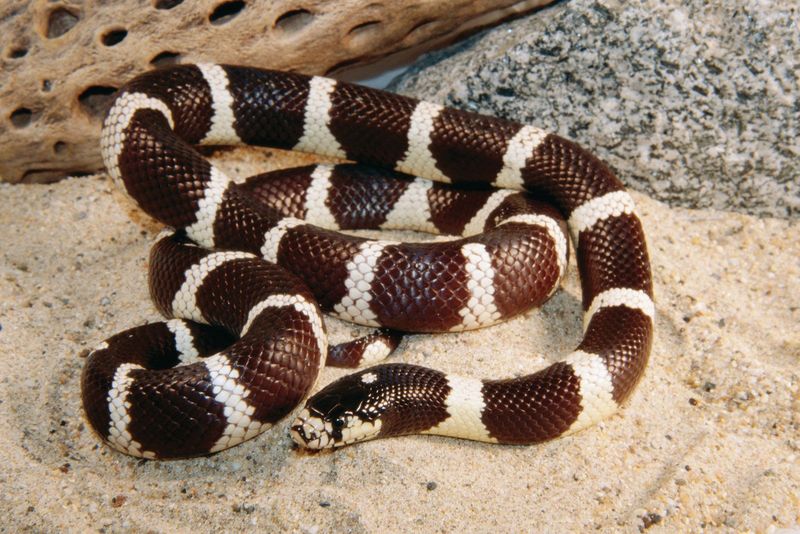
King Snakes are known for their immunity to other snakes’ venom, allowing them to prey on venomous species. Their bold patterns and colors make them stand out in the wild.
They inhabit a range of environments across the USA, from forests to deserts. King Snakes are valuable for their role in controlling snake populations, including venomous species.
Known for their calm demeanor and striking appearance, King Snakes are a favorite among hobbyists. Their adaptability and unique diet make them fascinating creatures to observe in their natural habitats.
Bull Snake
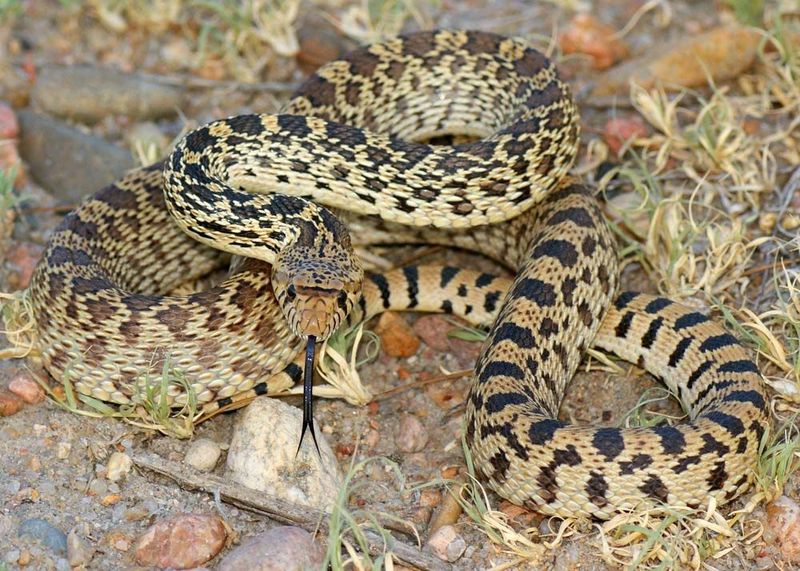
The Bull Snake is one of the largest snakes in North America, often mistaken for a rattlesnake due to its size and behavior. Found in open fields and prairies, it thrives in the central USA.
Bull Snakes are non-venomous but can mimic rattlesnakes to deter predators. Their diet consists mainly of rodents, making them beneficial for pest control.
Although they may hiss and rattle their tails, Bull Snakes are generally docile. Their impressive size and unique behaviors make them a captivating species for those interested in wildlife observation.
Water Moccasin (Cottonmouth)
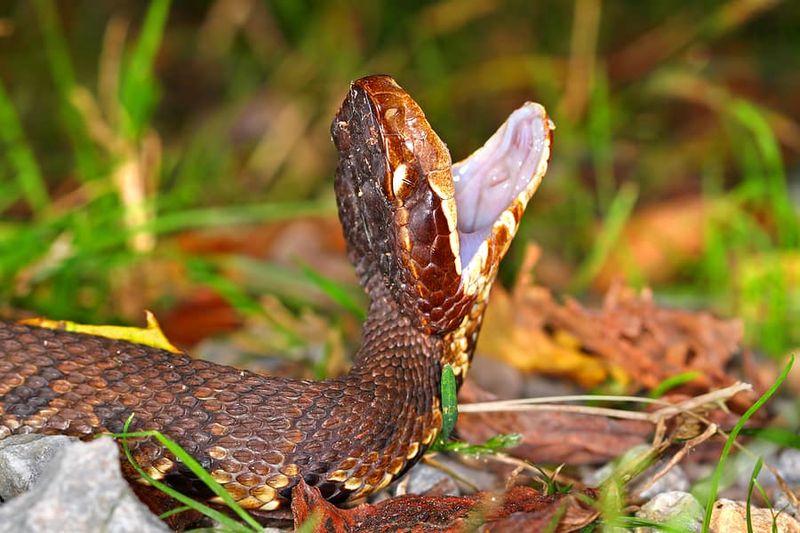
The Water Moccasin, also known as the Cottonmouth, is a semi-aquatic snake found in the southeastern USA. Its name comes from the white interior of its mouth, displayed when threatened.
Cottonmouths inhabit swamps, marshes, and slow-moving streams, where they hunt for fish and amphibians. Their venomous bite requires caution, but these snakes are generally not aggressive unless provoked.
Their unique behavior of basking on logs or swimming in water makes them a fascinating sight for those exploring wetland areas. Observing Cottonmouths offers a glimpse into the life of a true aquatic predator.
Timber Rattlesnake
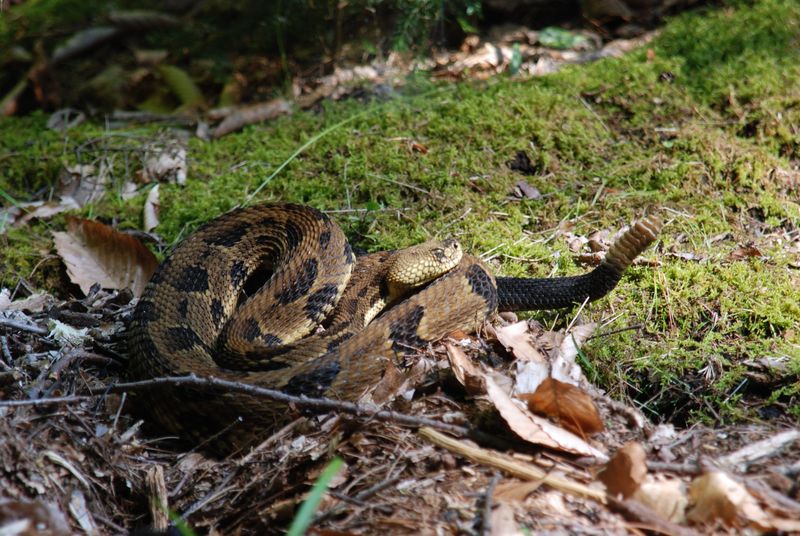
The Timber Rattlesnake is a symbol of the rugged eastern USA. Known for its distinctive rattle and patterned skin, this snake prefers forested mountains and rocky ledges.
Its venomous bite is a defense mechanism, but Timber Rattlesnakes are generally shy and avoid human contact. They play an important role in controlling small mammal populations.
Spotting a Timber Rattlesnake in its natural habitat is a thrilling experience. Their ability to blend into the rocky landscape adds an element of surprise and wonder to any encounter.
Red-bellied Snake
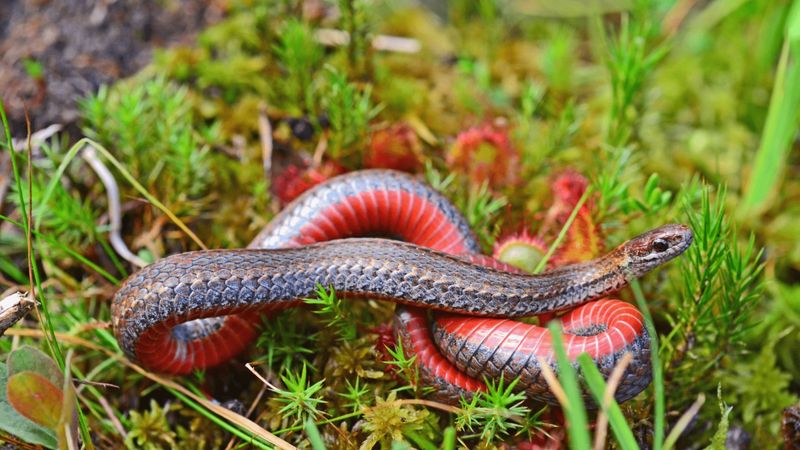
The Red-bellied Snake is a small, secretive snake found in the eastern USA. Known for its vivid red belly, this snake often goes unnoticed due to its reclusive nature.
It prefers moist environments such as forests and fields, where it feeds on slugs and insects. Despite its small size, the Red-bellied Snake plays a significant role in the ecosystem by controlling invertebrate populations.
For those lucky enough to spot one, the Red-bellied Snake offers a glimpse into the hidden world of small forest creatures. Its striking coloration is a delightful surprise for observant nature lovers.
Hognose Snake
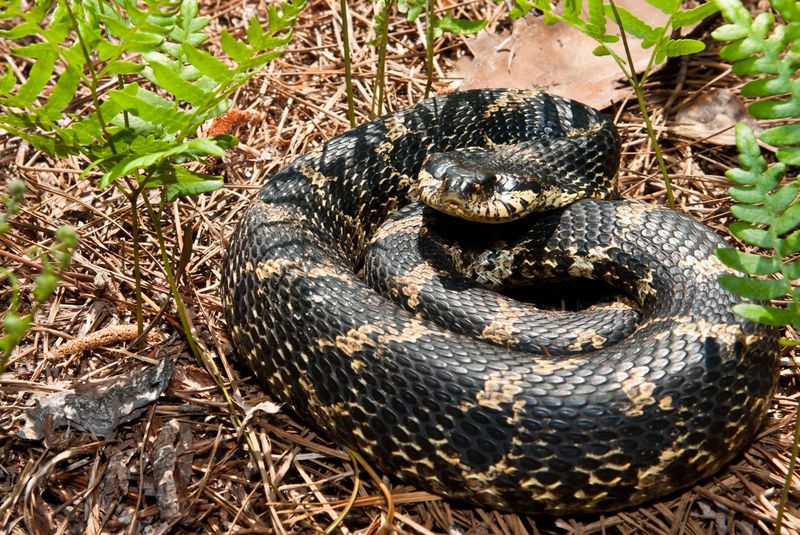
The Hognose Snake is famous for its dramatic defensive behaviors, including playing dead. Found in sandy areas and open fields, it captivates with its upturned snout and unique antics.
Hognose Snakes are non-venomous and pose no threat to humans. Their diet mainly consists of toads, and they use their snouts to dig through loose soil in search of prey.
Their ability to inflate their bodies and mimic more dangerous snakes adds to their allure. Observing a Hognose Snake’s theatrical display is a memorable experience for any wildlife enthusiast.
Ribbon Snake

The Ribbon Snake is a sleek and slender snake found near water sources in the eastern USA. Its long body and distinctive stripes make it a graceful presence in marshes and streams.
Ribbon Snakes are non-venomous and feed primarily on amphibians and small fish. Their agility and speed make them skilled hunters, often seen darting through vegetation in pursuit of prey.
Their affinity for water and elegant movement have made them a favorite among those studying aquatic ecosystems. Observing a Ribbon Snake offers a glimpse into the graceful life of a water-loving serpent.
Coachwhip Snake
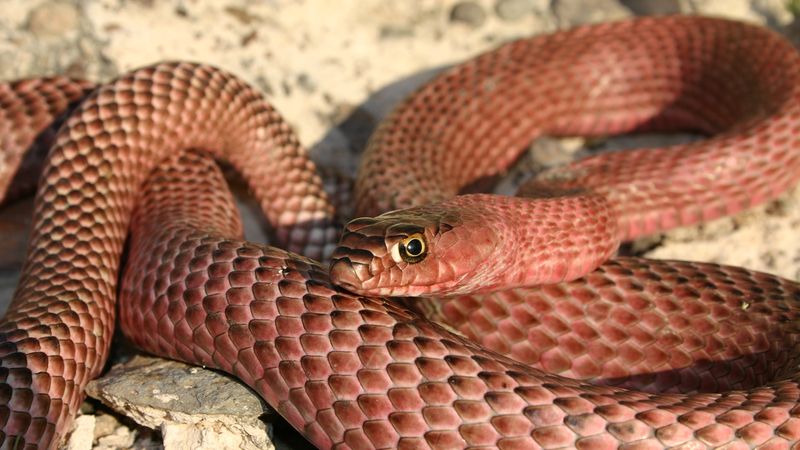
The Coachwhip Snake is known for its incredible speed and agility, often seen racing across open fields in the southern USA. Its long, slender body and whip-like tail give it a distinctive appearance.
Coachwhips are non-venomous and highly alert, preying on a variety of creatures, including insects, lizards, and small mammals. Their keen senses and quick reflexes make them adept hunters.
For those fortunate enough to witness a Coachwhip in action, it’s a spectacle of nature’s speed and precision. Observing this dynamic snake in motion is a thrilling experience for any nature enthusiast.

